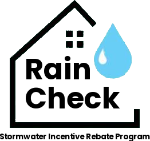![The Myakka River gently flows as it meanders through Myakka River State Park. [credit: sarasota county government]](/media/sfylifasufledu/sarasota/images/banner1650x470/2015_Comms_T4_myakkaPark_1650w.jpg)
Healthy Ponds
The Health Ponds program is currently undergoing a reworking by UF/IFAS staff, and, as such, is currently unavailable for new engagements. Please check back at this page or at the UF/IFAS website for more information, as it becomes available.
Resources
- Fact sheet: Stormwater Ponds (PDF)
- Fact sheet: Best Management Practices for Blue-Green Algal Blooms in Ponds (PDF)
- Fact sheet: Buffer Zones for Stormwater Ponds (PDF)
- Postcard: Healthy Ponds and You! (PDF)
- Postcard: Healthy Pond Banks & Buffer Zones (PDF)
RainCheck is a rebate program meant to incentivize homeowners to install small-scale best management practices for stormwater management.
Subscribe to "The Current" newsletter to get the latest in water resources news.
![screen shot of top portion of the current newsetter, with water resources program information. [credit: uf/ifas extension sarasota county]](/media/sfylifasufledu/sarasota/images/water/2025_Water_screenTheCurrentNwsltr_juneCROP1000x859-181x207.png)

